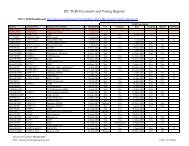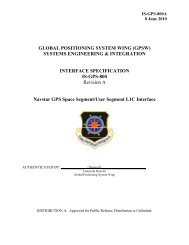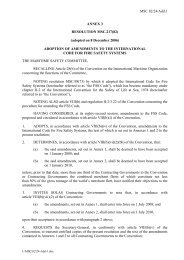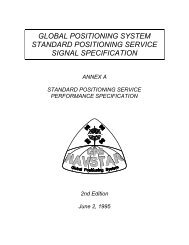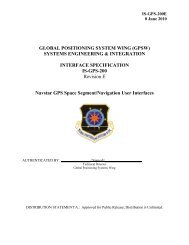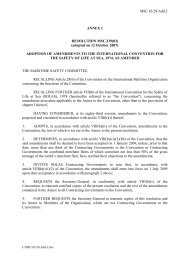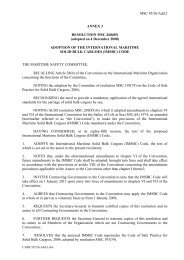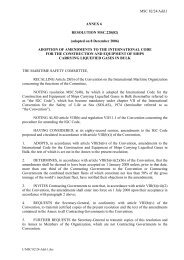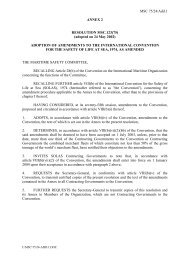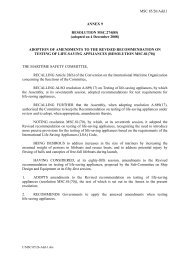The LORAN-C System - US Coast Guard Navigation Center
The LORAN-C System - US Coast Guard Navigation Center
The LORAN-C System - US Coast Guard Navigation Center
You also want an ePaper? Increase the reach of your titles
YUMPU automatically turns print PDFs into web optimized ePapers that Google loves.
ionosphere. <strong>The</strong> reflection height will vary from approximately 60kilometers during daylight, to approximately 90 kilometers at night.From the geometry of the reflection, it is obvious that the skywavesignal must travel a longer distance to reach an observer and willarrive after the corresponding groundwave generally after a time lapseof from 35 usec to 1000 usec after the groundwave (depending upon theheight of the reflecting layer in the ionosphere). Because skywaves donot travel over the surface of the earth, these are not attenuated tothe same extent as the groundwave. In consequence, at long distances,the skywave signal may be very much stronger than the groundwavesignal. <strong>The</strong> skywave can cause distortion of the received groundwavesignal in the form of fading and pulse shape changes generally giventhe name skywave contamination.Although it is possible to develop position information from skywavesignals (and, indeed, skywaves were used in early loran), the mostaccurate navigation requires the use of the loran groundwave. (Use ofskywaves for navigation is discussed briefly in Appendix H.)<strong>The</strong> reason why groundwaves are preferred over skywaves for accuratenavigation is that the propagation conditions (in the ionosphere) arenot stable, but change from day-to-day and even hour-to-hour, whichvastly complicates the problem of prediction of arrival times forskywaves. <strong>The</strong> skywave, therefore, is generally regarded as anuisance, and the Loran-C system has been designed in part to minimizethe possible influence of skywaves on groundwave reception andtracking.Pulse Architecture andRelated Technical MattersIt is noted above that the Loran-C system uses pulsed transmission ninepulses for the master and eight pulses for the secondary transmissions.Figure II_7 shows this overall pulse pattern for the master and threesecondary transmitters (X-ray, Yankee, and Zulu). Shown also in FigureII_7 is an exploded view of the Loran-C pulse shape. It consists ofsine waves within an envelope that might loosely be described asteardrop shaped, and is referred to technically as a t-squared pulse.(<strong>The</strong> equation for the envelope is also included in Figure II_7.) Thispulse will rise from zero amplitude to maximum amplitude within thefirst 65 usec and then slowly trails off or decays over a 200_300 usecinterval. <strong>The</strong> pulse shape is designed so that 99% of the radiated poweris contained within the allocated frequency band for Loran-C of 90 kHzto 110 kHz.<strong>The</strong> rapid rise of the pulse allows a receiver to identify oneparticular cycle of the 100 kHz carrier. Cycles are spacedapproximately 10 usec apart. <strong>The</strong> third cycle of this carrier within theenvelope is used when the receiver matches the cycles. <strong>The</strong> third zerocrossing (termed the positive 3rd zero crossing) occurs at 30 usec intothe pulse. This time is both late enough in the pulse to ensure anappreciable signal strength and early enough in the pulse to avoidskywave contamination from those skywaves arriving close after thecorresponding groundwave.




